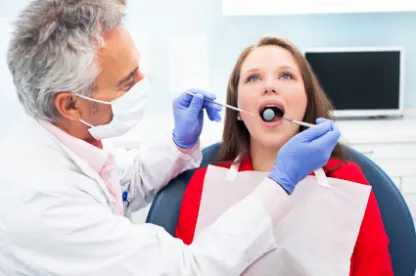South Carolina has slowly begun to reopen over the last few weeks. While every state and many individual jurisdictions have different reopening criteria, in South Carolina, close contact businesses are now open.
I recently went to the dentist. To be honest, I was a little nervous, to my relief, my dentist did an excellent job and it was clear he had fully thought through his return to work plan. Sometimes as a lawyer, I tend to focus on the things that can go wrong. Moreover, I have worked closely with dozens of clients on how to reopen safely, so I have these issues on my mind. Here are some things employers can consider as they move to reopen.
Communication, Screening, and Privacy
My dentist did a great job communicating with me. His plan for testing and screening employees and patients for COVID-19 was clear. This was important to me because it let me know he had a plan in place to keep both his patients and his staff safe. It started with a call the day of the appointment from his office to ask a series of questions related to my potential exposure to COVID-19. My dentist requested I wear a mask into the office and as I left my procedure area. Once I arrived at the office, I was again asked the same questions and I was asked to sign a form with my answers. The office staff also took my temperature when I arrived. All of these were appropriate, legally permissible screening procedures for a visitor aimed at keeping both patients, third-party office visitors, and staff safe.
Because a dentist is a medical provider, my dentist did not need to worry about new privacy concerns related to the collection of this type of personal health information for his patients. He is already a covered entity under the Health Insurance Portability and Accountability Act (HIPAA) and is already under an obligation to keep my medical information private. His collection of this information on his employees is a different story, however. In addition, my dentist was well aware of the limitations and exceptions to HIPAA if he does encounter a patient exposure to COVID-19. On April 2, 2020, the U.S. Department of Health and Human Services issued a summary of the circumstances in which HIPAA’s Privacy Rule allows a covered entity to share that information with law enforcement, paramedics, other first responders, and public health authorities, without an individual’s explicit authorization if an exposure and contact tracing is required. This would be necessary to protect both patients and his staff.
Reimagining the Office Environment
It was also clear to me that my dentist had thought through how his office works before his reopening. This is an important step in any return-to-work plan. Chairs had been removed and reorganized in the waiting room so they were further apart, and the toothbrushes had been removed from the bathroom (although they were still available upon request). In addition, my dentist had changed the spacing of his appointments so there would be less risk of patients waiting with others in the reception area or being too close to each other when checking out and making the next appointment.
Personal Protective Equipment and New Safety Precautions
As a medical provider, my dentist was familiar with the steps to properly clean equipment and the use of personal protective equipment (PPE). He also implemented additional protections in the wake of COVID-19. As a patient, I wore protective glasses. The hygienist wore additional PPE, including a disposable gown and face shield on top of her glasses and mask. There are many types of face coverings and masks available, and businesses must not only take into account the type that is suitable for their staff but also how to handle situations in which customers refuse to wear face coverings. My dentist and his staff also wore gloves. The hygienist cleaned and disinfected the chair between patients. The waiting areas and checkout booth were also wiped clean after each patient exited the area.
Productive Use of Office Closures
I often talk shop with my dentist. I was intrigued to hear that he had used the time during his office closure to upgrade his computers and to remotely train his employees on how to use the new technology. Talk about making lemonade out of lemons. Because he had received a loan through the Paycheck Protection Program (PPP)—a provision included in the Coronavirus Aid, Relief, and Economic Security (CARES) Act—he was able to keep his staff on board and use the time as productively as possible. Because he did not have to lay off staff, he will qualify for forgiveness of the PPP loan, even if he cannot take a tax deduction on the portion of the PPP that is forgiven.
The office also had extensive training on new procedures related to its return-to-work plan prior to the opening of the office to patients. My hygienist commented on how important a return-to-work plan and communication was to her upon returning to work. The employees in the office were all anxious to return, but also were understandably concerned about safety measures given that their positions require close contact with customers. The training performed by my dentist assured his staff that proper precautions had been taken and they all seemed to be at ease in the office.
I am thankful that my dentist was educated, informed, and took the proper safety precautions in reopening his office. I felt safe and his employees were clearly comfortable with the new procedures and plan to protect everyone. It was clear that my dentist took considerable time to formulate a return to work plan that addressed the key issues to his practice. For that, I say thank you and I am so glad to have you back open.




 />i
/>i
